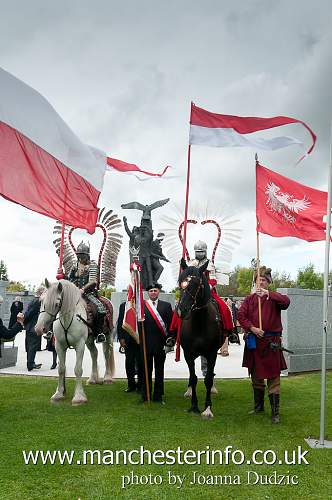
by
75th Anniversary of the Outbreak of WWII

Poland marks the 75th anniversary of the outbreak of World War II Monday with one eye on Russia, which invaded it during the war and is now throwing its weight around in neighbouring Ukraine.
From the very first German shells fired at a Polish fort in Gdansk in the early hours of September 1, 1939, to the final days in 1945, Poland suffered some of the worst horrors of the war, chief among them the extermination of most of its Jewish population by the Nazis.
Nearly six million Poles, or about 17 percent of the population — including around three million Jews — died in the conflict.
Memories of the era have been bubbling to the surface since Russia seized Ukraine’s Crimea peninsula in March, and a fierce conflict began in the country’s east.
“To use military force against one’s neighbours, to annex their territory, to prevent them from freely choosing their place in the world — this provides a worrying reminder of the dark chapters of Europe’s 20th-century history,” Polish President Bronislaw Komorowski said in a newspaper opinion piece ahead of the anniversary.
Polish historian Andrzej Friszke meanwhile recalled the infamous Munich agreement that Britain and France signed with Nazi Germany in 1938, allowing it to annex swathes of Czechoslovakia in a failed bid to avert war.
“There is an attempt again to sacrifice some (people) to buy an illusion of peace for the rest,” he told AFP.
- Poland carved up -
On August 23, 1939, Germany and the Soviet Union secretly agreed to carve up eastern Europe between them by signing the Molotov-Ribbentrop Pact.
Just over a week later, the German battleship Schleswig-Holstein opened fire on the Polish fort of Westerplatte, near the northern city of Gdansk (then called Danzig).
It is at Westerplatte that Poland will hold official ceremonies on the September 1 anniversary, with Komorowski and his German counterpart Joachim Gauck in attendance.
One of the first cities bombed by the Nazis was Wielun, near the former German-Polish border. It was destroyed in the very first minutes of the war, with 1,200 of its residents killed in the initial attack.
“It was a foretaste of how the war would turn out: the bloodiest, most terrifying of all of history’s conflicts,” said Jan Szkudlinski, a historian at the new Museum of World War II in Gdansk.
“A conflict that, in contrast to the war of 1914-18, claimed many more civilian victims than military lives,” he told AFP.
Hitler’s attack on Poland led Britain and France to declare war on Nazi Germany.
On September 17, 1939, the Soviet Union in turn invaded Poland and the Red Army executed thousands of Polish army officers in 1940 in the notorious Katyn massacre.
In 1941, the Nazis tore up the pact with Moscow and invaded Soviet-occupied eastern Poland.
Two alliances then battled it out until the end: the Axis powers led by Germany, Italy and Japan and the ultimately victorious Allied forces led by Britain, the Soviet Union and the United States.
- ‘Shivers up my spine’ –
Barbara Rybeczko-Tarnowiecka was nine years old and living with her parents in Warsaw in 1939.
“I still remember the sound of the bombs and the frightening din of the windows all shattering at once,” she told AFP.
“And I retain the sight of the column of German troops passing before our house and singing at the top of their lungs.”
She peered at them through the bars of the front gate to her building along with other neighbourhood children. Fast-forward 75 years and Rybeczko-Tarnowiecka is again apprehensive.
“I am very concerned by what is going on between Russia and Ukraine,” she said.
“To be honest, I’ve been avoiding the news, because it sends shivers up my spine.”





 .
.
 . In regards to the post I believe the powers at be are definitely rumbling.
. In regards to the post I believe the powers at be are definitely rumbling.





Bookmarks